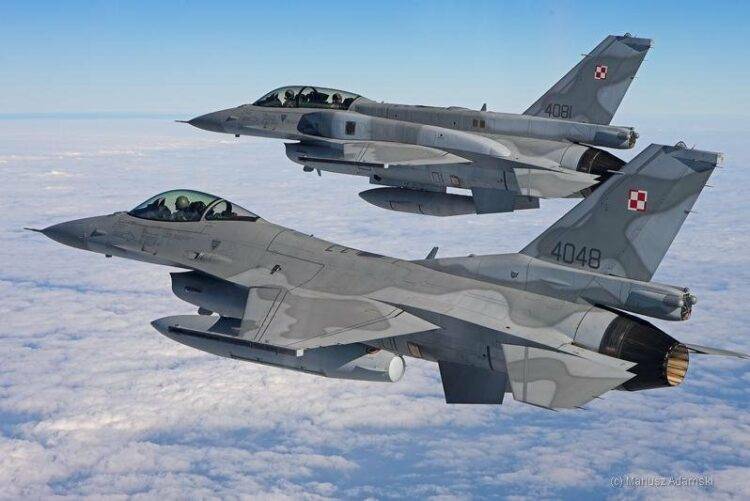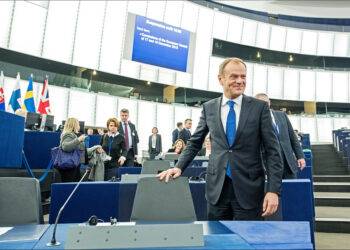In a dramatic escalation of tensions in Eastern Europe, Poland was compelled to deploy F-16 fighter jets in response to a barrage of missiles launched by Russia towards the NATO-member’s border with Ukraine. This development marks a significant moment in the ongoing conflict, highlighting the potential for wider regional involvement and the precarious position of NATO in the face of Russian aggression.
Early reports indicate that the missiles, part of a larger offensive by Russia, ultimately did not cross into Polish territory but instead struck various targets across Ukraine, including residential areas and military installations. The attacks have resulted in widespread destruction and casualties, with cities like Kyiv and Kharkiv bearing the brunt of the onslaught. Disturbing images from the capital showed residential blocks engulfed in flames, a stark testament to the severity of the attack.
The incident has reignited fears of a possible expansion of the conflict into a full-blown war involving NATO, as the trajectory of Russian missiles suggested a potential threat to Polish territory. Such an event could trigger Article 5 of the NATO treaty, which considers an attack on one member an attack on all, potentially drawing the alliance into direct conflict with Russia.
- Follow us on X (Twitter) to stay up to date with News from Poland.
Poland’s decision to scramble jets underscores the heightened state of alert along NATO’s eastern flank. The Polish government has assured its citizens and the international community that it is taking all necessary measures to protect its airspace and maintain security. This includes constant monitoring of the situation and coordination with NATO allies.
The attack on Ukraine comes amid a complex backdrop of geopolitical tensions and military strategies. Russia’s aggressive posture and willingness to target civilian infrastructure have been condemned internationally, with calls for a de-escalation of the conflict and a return to diplomatic negotiations.
However, the situation remains volatile, with the potential for further escalation high. The international community watches closely as events unfold, hoping for a resolution that can bring peace to the region and avert a larger crisis. The involvement of NATO in this conflict, even indirectly, represents a significant escalation and poses questions about the future of European security and the international order.
As the situation develops, the response of NATO and the international community will be critical in determining the course of events in Eastern Europe. The hope remains that diplomacy will prevail over further military confrontation, but the recent missile attacks near the Polish border are a stark reminder of the fragility of peace in the face of aggression.


















